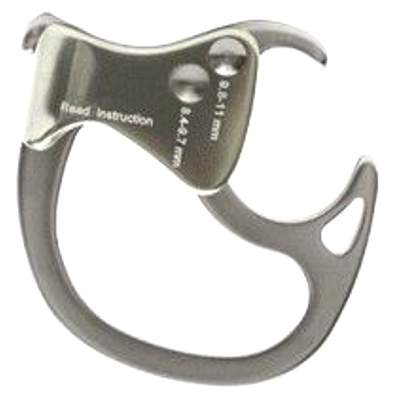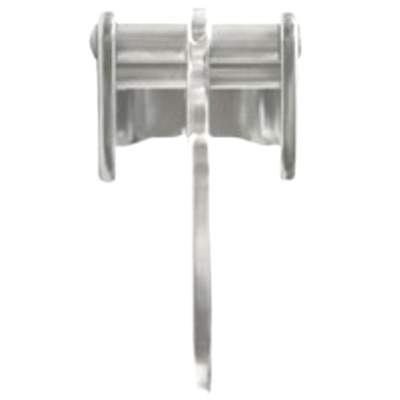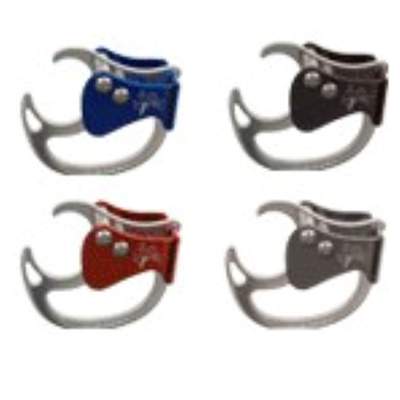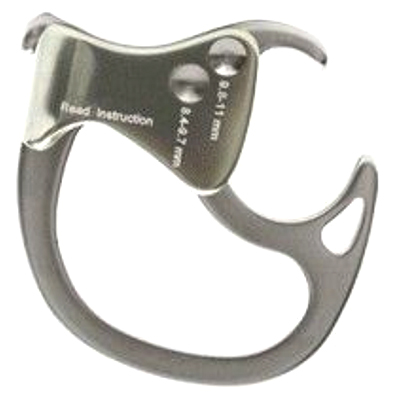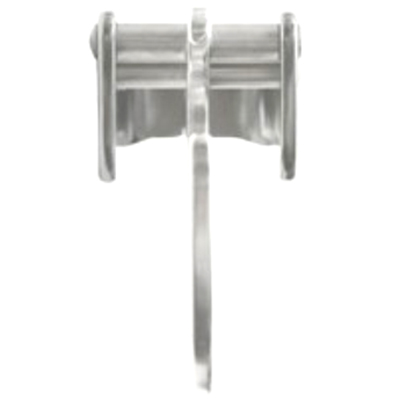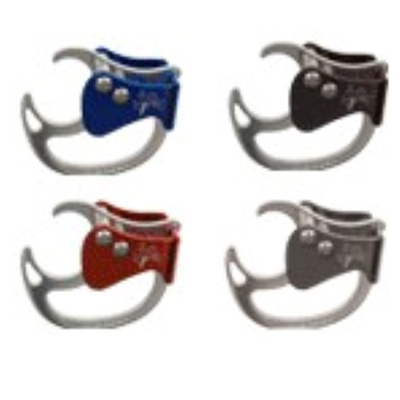Mad Lock
Description
The Mad Scientists have done it again. This time, we've taken an ordinary belay device and made it into a stylish, multipurpose device. The Mad Lock is engineered out of aircraft quality aluminum to create a lighter frame. It has a unique design to provide an innovative new way to control speed of descent and look good while doing it. You can use it to belay the leader, the second, lock off, or even open beer bottles. The innovative 45 degree loading design allows for the belay to lower the second climber without creating a leverage advantage. The removable pin allows you to use ropes from 8.4mm G-Strings to 11mm tactical monsters. What more can you ask for?
Retail price
When you click a link below and then checkout online, no matter what you buy (climbing gear or not), we get a small commission that helps us keep this site up-to-date. Thanks!
Device Type  Device TypeTubeThe most commonly used belay type also called an “ATC” or “tuber.” Other than a distinction between other belay device types, “Tube” is a rarely used term, most climbers just assume you're talking about this style when they refer to your "belay device." 
Figure 8Mostly used in rescue, canyoneering, tactical, work safety, or by old school climbers and rappellers. One reason they went out of popularity with recreational climbers is because they tend to create twists in the rope. 
Brake AssistThese devices assist in stopping the rope when a climber falls or hangs on the rope. 
Often referred to as “auto-blocking” but that’s not the official terminology because no belay device should be assumed to work automatically by itself, even if it feels like it does (or does most the time). PlateWhen simplicity is a must, or you started climbing before Tubers were the norm. Bonus: They tend to be very light weight. 
DescenderFor rappelling, not for belaying a lead climber or top-roping. 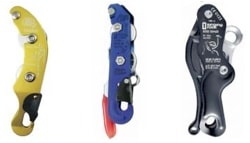 |
Tube |
Weight (g)  Weight (g)In grams, the weight, as stated by the manufacturer/brand. |
50 g |
Belay Brake Assist  Belay Brake AssistThis is when the belay device significantly reduces the amount of holding power the belayer must exert to stop a fall and hold a climber. This is also called "assisted-braking" as the device must hold a significant amount of the climber’s weight; this term does not include friction-adding "teeth" found on some tube style belay devices. Confusingly referred to as “auto-blocking” or “auto-locking” these terms wrongly imply the device will always, automatically, stop a fall or hold a climber even if the belayer/rappeller is hands-free. These devices are not meant to be used without a hand on the braking side of the rope; the belayers/rapppeller brake hand should always be on the brake rope. Worth ConsideringMost of the mechanical brake assist devices only hold a single strand of rope and are not capable of double-strand rappelling (the most common method of rappel). |
No |
| Rope Options | 1 or 2 ropes |
Guide Mode  Guide ModeThis is when you belay directly off the anchor instead of your harness. Guide mode is helpful if you climb outdoors a lot because it reduces the holding power required from the belayer. When your partner falls or rests, the weight of the climber is held mostly by the anchor and the belay device. Tubers and PlatesWhen belaying in "guide mode," the tubers and plates turn auto-blocking. During a fall, the climbing rope pinches the slack rope, completely stopping the movement of either rope. A common guide mode setup shown below. 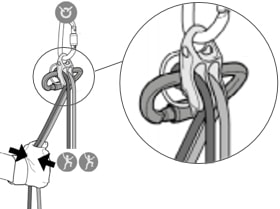
Mechanical Brake Assist DevicesThere is no difference in the functionality of the device. A brake-hand should always be on the rope to ensure the climber is caught in the case of a fall. A common guide mode setup shown below. 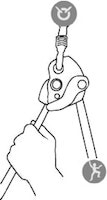
Where guide mode is used
Learn Morehttp://www.climbing.com/skill/essential-skills-auto-blocking-belay-devices/ |
No guide mode |
Teeth  TeethTeeth are only seen on tube devices. They add friction that helps grip the rope for more belaying control. This is helpful for belaying heavier climbers. Teeth are becoming standard on new tube devices. 
Worth ConsideringTeeth do wear out. You can limit wear by rappelling on the side without teeth (if you don’t need the extra friction). Once they’re worn, you’ll still have a usable belay device, just less friction. |
No |
Rope Range (mm)  Rope Range (mm)The range of rope diameters, in millimeters, that the manufacturer/brand specifies can safely be used. This is the best case scenario and does not necessarily take into consideration that certified ropes have a tolerance of +/- .3 mm. Recently, manufacturers have started to add an "optimized" rope range -- this is the range that will result in the nicest handling of the belay device. | 8.4 mm - 11.0 mm |
Certification  CertificationsThe main climbing gear certifications are CE and UIAA--and normally the UIAA creates the rules that the CE body also supports. When possible, we try to list all the certifications the product carries. To sell a climbing product in Europe, the device must be CE certified. There are no official requirements to sell climbing gear in the US. The UIAA certification is a voluntary process. Learn MoreRock and Ice Certifications Guide |
|
No reviews yet.
Problem: you’re belaying your second directly off the anchor station when he falls. He hollers up, asking to be lowered 10 feet to a ledge. To feed the requisite slack with many self-braking belay devices, you’d have to hook a release hole with an extra carabiner (possibly adding a sling) and use mechanical advantage. Solution: the Mad Lock from Mad Rock. Applying only manual pressure (depending on the climber’s weight/belayer’s strength) to a protruding horn, you can gradually release the lock. Another clever twist comes via the removable friction pin, which allows the Mad Lock to handle, with customizable bite, ropes from 8 to 11mm.
A LITTLE HELP
When the Mad Lock’s set up as a standard, tube-style device, this secondary horn offers a handy rope-wrap point, so you can lock off your climber while she dogs the project du jour.
HORN OF PLENTY
The aluminum horn that gives the Mad Lock its unorthodox appearance has two functions: 1) it’s the cantilever with which you release the device when belaying off an anchor in self-braking mode, and 2) it’s a bottle opener, for brews with your bizzled braus (!).
ADJUSTABLE FRICTION
Use a small hex key to add or remove this secondary pin, to custom-size the rope slots. Up the friction to handle skinnier ropes or heavier climbers.
If you know of a good product video that should be here, let us know, and we'll put it up.
If you're looking for gear videos in general, check out our Vimeo and YouTube channels to see the newest gear.

